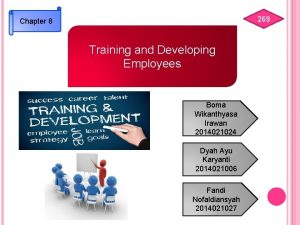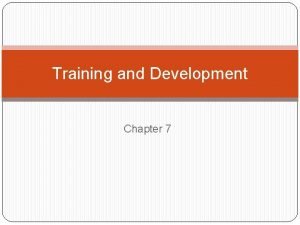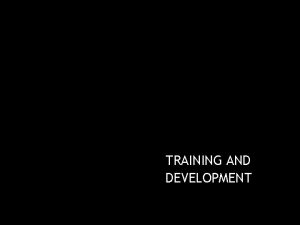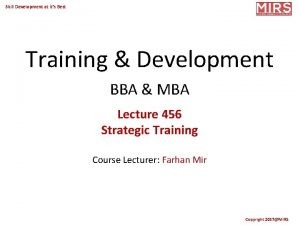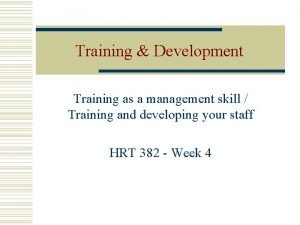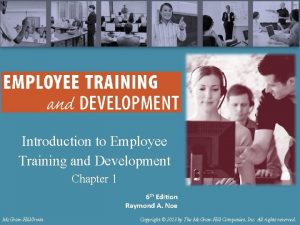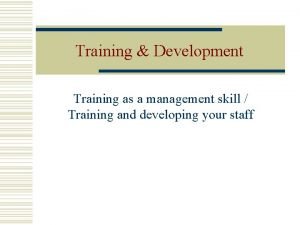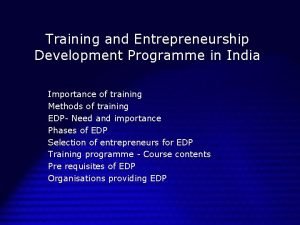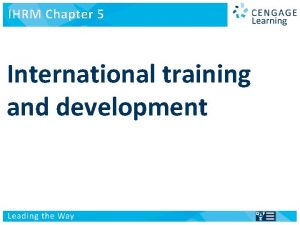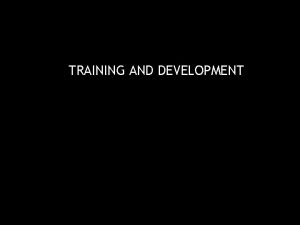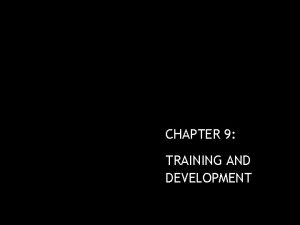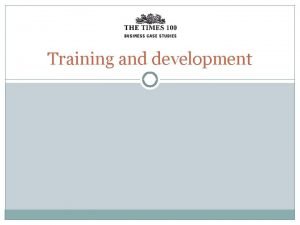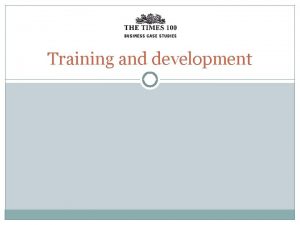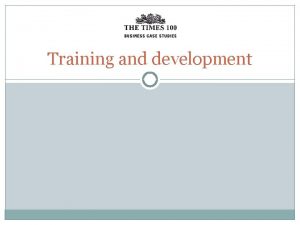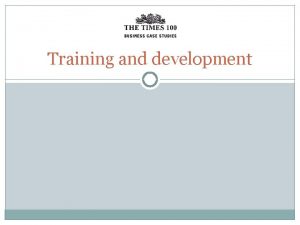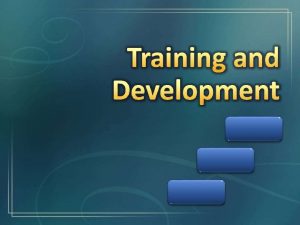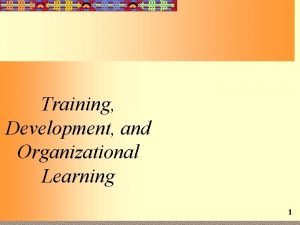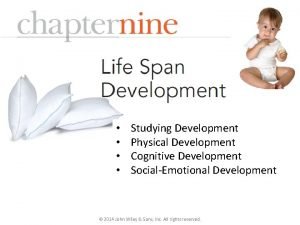CHAPTER 9 TRAINING AND DEVELOPMENT Training Development Training













- Slides: 13

CHAPTER 9: TRAINING AND DEVELOPMENT

Training & Development • Training & development – Represents ongoing investment in employees & realizes employees are assets. • Importance of training & development – Rapid technological changes cause skill obsolescence – Redesign of work brings need for new skills – Mergers & acquisitions have increased need for integrating employees into different cultures – Employees are moving between employers more often, necessitating training – Globalization of business requires new knowledge 1– 2 & skills

Benefits of Training & Development • Individual employee – Increased employee marketability – Increased employee employability security • Organization – Improved bottom line, efficiency & profitability – Reduced layers of management – Makes employees more accountable for results 1– 3

Exhibit 9 -1 Strategizing Training 1– 4

Exhibit 9 -2 Levels of Needs Assessment 1– 5

Setting Training Objectives • Align/match identified training needs with training objectives • Define objectives in specific, measurable terms – Desired employee behaviors – Results expected to follow from such behaviors • One source of information for setting objectives – Performance deficiency data contained in performance management system 1– 6

Design • Critical training design issues – Interference from & difficulty of overcoming prior training, learning, habits – Transfer of newly learned skills back to job • Choice of training environment approximating or simulating actual working conditions – Organizational environment supportive of training & development – Contents need to be designed as well • Offline or online training 1– 7

Computer-Based Instruction • Benefits – Self-paced – Adaptive to different needs – Can be customized – Easy to deliver – Usually less expensive to administer – Can be conducted when convenient for employee • Drawbacks – Learners must be self-motivated – Cost of producing online, interactive materials – Lack of interaction with others may work against needs & preferred learning styles 1– 8

Delivery • On-the-job training – Internship/ Apprenticeship – Coaching and mentoring – Job rotation – Informal learning • Off-the-job training – Lectures – Audiovisual-based training – Case study – Seminar – Simulated learning – Corporate universities 1– 9

Evaluation • Integral part of overall training program • Provides feedback on effectiveness of training program • Evaluation criteria should be established in tandem with & parallel to training objectives 1– 10

Exhibit 9 -3 Four Levels of Training Evaluation 1– 11

Exhibit 9 -4 Link Between Training & Performance Management & Compensation 1– 12

Thank you! 1– 13
 Chapter 8 training and development
Chapter 8 training and development Method of training
Method of training International training development and careers
International training development and careers Chapter 5 diversity and human needs and development
Chapter 5 diversity and human needs and development Quotes about learning and development
Quotes about learning and development Differentiate between training and development
Differentiate between training and development Faculty model of training
Faculty model of training Free state training and development institute (fstdi)
Free state training and development institute (fstdi) Ask concept in training and development
Ask concept in training and development Introduction to employee training and development
Introduction to employee training and development Ask concept in training and development
Ask concept in training and development Edp course contents
Edp course contents Menghitung desain pelatihan
Menghitung desain pelatihan Components of ihrm
Components of ihrm
